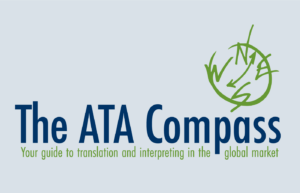Best Translation Apps: A Translator Puts Four to the Test

The best apps for translating language? It depends…
I’m talking about the kind of apps that can take a sentence- or even document-level input and give you back a translation in the blink of an eye. There are plenty of these free translation apps out there. Maybe you’ve heard of two of the most popular translation apps – Google Translate and DeepL – but which is better? What is the most accurate translation app? Is there one?
As a professional Spanish to English translator and editor, it benefits me to keep up with the latest technology – adding gadgets to my translation toolbox when they facilitate my work and increase my productivity while discarding any that waste my time. So in the interest of full disclosure, I should mention that I don’t personally use these free translation apps or any AI-powered translation apps for my business. Nor do I offer machine-translation post editing as a service. I find that I get a better end result in about the same amount of time if I just do the translation from scratch, and that’s because I’ve been at this for years, so I can very often read a Spanish sentence and know exactly how I want to render it in English. My brain is my best translation app.
I, for one, will never suggest you add glue to pizza cheese so it doesn’t slide off, as AI has. What’s more, I like flexing my brain and want to keep it healthy. A recent study used EEG tests to determine that over-reliance on ChatGPT can decrease brain function.
How accurate are translation apps?
Whether you’re using GoogleTranslate, DeepL, or an alternative, the best translation apps available today use something called neural machine translation or NMT. The systems are trained on huge amounts of text data to recognize patterns and relationships in language. They can then use that information to predict the most likely translation. But NMT output can only be as accurate as its input. Ever heard the phrase “garbage in, garbage out”? If NMT has high quality data – and lots of it – it can get things right. If it doesn’t, then it may just take a good guess or even get things seriously wrong.
Let’s look at a quick example. The phrase “¿Qué quiere tomar?” is something you’ll hear often in restaurants and bars in Spain and Latin America. It’s how a server would ask you what you’d like to drink. But “quiere” can mean either “you want” or “he/she/they want(s)” depending on the context. And the word “tomar” can also mean “take,” so one accurate translation of this phrase is: “What does he want to take?” But that obviously doesn’t fit the context.
This exemplifies a key concept in linguistics that we professional translators deal with on a daily basis: different languages differ in what they can and must express. In English, you have to use a subject (you) in that sentence (what would you like to drink?), but it’s not required in Spanish. That means you’ll need more context to determine the subject because the verb “quiere” functions equally here for both third person and second-person formal. We need the context of a person ordering at a bar to properly translate the phrase.
That said, all four of the free translation apps I tested got this one right, with some variation of “What would you like to drink?” One even went as far as to colloquialize it to “What’ll you have?” Of course, this is a common phrase that has been translated many times, so it shouldn’t surprise us that the apps have the data needed to generate the right translation. But what happens when translation apps have fewer translations to pick from? That’s where my test comes in.
Which of the best translation apps did I look at?
Google Translate is the most popular translation app (according to… Google), so it had to make the list. I also wanted to look at some Google Translate alternatives, so I picked DeepL, Reverso Context, and Spanish Dictionary.com. They all exist as apps for both Android and iPhone. Here’s a quick logistical comparison:
| Google Translate | DeepL | Reverso Context | SpanishDictionary.com | |
|---|---|---|---|---|
| Number of languages available | 249 | 35 | 28 | 1 |
| Offline use? | Yes | No | Yes | Yes |
| Voice-to-text feature? | Yes | Yes | Yes | Yes (with premium) |
Why these four translation apps? Google is pretty ubiquitous and has, by far, the most languages available. I tend to use Google Translate while traveling and/or when I don’t speak the language I’m trying to translate from. I use DeepL and Reverso Context’s dictionaries in my work, but I’d never actually used the translation feature until I started thinking about all these free translation apps, which one is the best, and how accurate they might be. And I included SpanishDictionary.com because I was curious if an app that focused on only one language would do a better job with it.

Some of the best translation apps take a literature test
How did I test the AI translation apps? Poetry. Not because I want the machine to fail, but because poetry is generally considered hard to translate; it’s so intensely personal and, well, human. It also uses language in a very non-literal way and leaves lots of room for interpretation. I chose “Ama tu ritmo” by Rubén Darío, a Nicaraguan poet, because it’s in the public domain, which means I can provide a translation here without violating intellectual property rights.
To create a baseline for the test, I took a stab at the translation myself so English-language readers can at least get the meaning. Disclaimer: while I am not a machine, I am also not a poet.
| Ama tu ritmo y ritma tus acciones bajo su ley, así como tus versos; eres un universo de universos y tu alma una fuente de canciones. | Love your rhythm and set yourself to the beat according to its law and your poetry; you are a universe of universes your soul, a wellspring of songs. |
| La celeste unidad que presupones hará brotar en ti mundos diversos, y al resonar tus números dispersos pitagoriza en tus constelaciones. | The celestial unity that you assume will see diverse worlds bloom in you, and as your scattered songs resonate pythagorize in your constellations. |
| Escucha la retórica divina del pájaro del aire y la nocturna irradiación geométrica adivina; | Listen to the divine rhetoric of the flying bird, and discern the night’s geometric radiation; |
| mata la indiferencia taciturna y engarza perla y perla cristalina en donde la verdad vuelca su urna. | kill taciturn indifference and string together pearl and glass bead where truth tips its urn. |
Now, it’s the machines’ turn. I gave each translation app one stanza to translate. The results are unedited.
| Google Translate | Ama tu ritmo y ritma tus acciones bajo su ley, así como tus versos; eres un universo de universos y tu alma una fuente de canciones. | Mother your rhythm and rhythm your actions I am under your law, as are your verses; you are a universe of universes and your soul a fountain of songs. |
| DeepL | La celeste unidad que presupones hará brotar en ti mundos diversos, y al resonar tus números dispersos pitagoriza en tus constelaciones. | The celestial unity that you presuppose will make sprout in you diverse worlds, and to the resonance of your dispersed numbers pitagoriza in your constellations. |
| Reverso Context | Escucha la retórica divina del pájaro del aire y la nocturna irradiación geométrica adivina; | Listen to the divine rhetoric of the bird of the air and night geometric radiation fortune-teller; |
| SpanishDictionary.com | mata la indiferencia taciturna y engarza perla y perla cristalina en donde la verdad vuelca su urna. | it kills taciturn indifference and crisses pearl and crystalline pearl where the truth overturns its urn. |
Takeaways
Can you mostly understand each translation? Sure. But the emphasis is on mostly. Let’s take a closer look at a few places where a human touch makes a difference.
- Google: formal and informal address confusion.
Google Translate incorrectly translated the line “bajo su ley, así como tus versos” – using third person rather than second-person formal. Google missed the broader context that a human translator would see; the very same line includes an informal “you,” which is a clue that the other possessive is third person. In Spanish, you don’t generally switch between the two when addressing one person.
- DeepL: thwarted by made-up words.
Poor DeepL was given a challenge with “pitagorizar” which is not actually a verb in Spanish, but it is being used like one. Rather than making up a similar word in English – for example, I opted for “pythagorize” – DeepL just left it in Spanish. I will give Google Translate credit on this one; it came up with the same solution I did here. Reverso Context went for “Pythagorean,” which doesn’t make grammatical sense. SpanishDictionary.com said “piitize,” so no comment there.
- Reverso Context: It’s a noun; it’s a verb; it’s…
“Adivina” is being used as a verb here in the third stanza. The syntax is admittedly a bit odd, but that’s poetry for you. Reverso Context assumes it’s a noun and translates it as “fortune-teller.”
- SpanishDictionary.com: It’s definitely a verb, but what kind of verb?
Finally, SpanishDictionary.com did recognize that “mata” (“kill”) is a verb, but it got the mode wrong because it didn’t recognize the imperative or command form.
This, again, could be solved with context. The rest of the poem is written in the imperative. As such, I checked whether inputting the entire poem would yield a better result and… it actually did! On this, humans and machines agree: more context equals better results. That said, there was still quite a bit of room for improvement – and the apps even generated several typos (“sprout” became “sproup”).

The best translation app?
Ultimately, I can’t say which is the best app for translating languages. They all did some things right and some things very wrong. Regardless, giving these four translation apps some poetic license has reminded me why my clients choose me over the machines. They pay me to use my brain and experience to deliver translations that a human would want to read. They know I’m sourcing terminology from the right contextual dictionaries; searching language forums and collaborating with colleagues when faced with subtle linguistic nuances or complex sentence structures; and proofreading my own work several times.
That’s how I know I’m being more thorough than even the best translation app. I’m looking at the full context; considering the intended message and audience, the register, the imagery that might be used with the text; and so much more. All of this informs my choices and how I translate. From subtitles to marketing copy, it’s not just about what’s being said; it’s about how it’s being said and how the target audience will engage with it.
So when asking yourself, “Are translation apps accurate?” the answer is, as always, “it depends on the context.” Translation apps are useful if you just need to get by in a foreign language – when you’re traveling and need to interact with the locals or need to get the gist of a document in a language other than your own. But often, style, tone, and flow are just as important as accuracy. Many professional translators use apps and other technology as tools before adding their own human touch. But I, for one, am convinced that the machines won’t be replacing me anytime soon.
If you want to hire a human translator to get your message across (or even check a machine translation), visit the ATA Language Services Directory to find the right professional for your needs.
Language Services Directory
Subscribe to The ATA Compass
Connect with The ATA Compass
Recent Posts
Exploring Translation and Interpreting Services
Why Are Language Services Essential in an Internationalized World? In a world where communication knows no bounds, effective language services are paramount. ATA helps you find professional translators and interpreters…
Read MoreThe ATA Compass
Want to reach more customers, grow your business, and improve your bottom line? The ATA Compass publishes articles and provides resources to show you how language professionals can help you…
Read MoreMachine Translation
What is machine translation? Machine translation (MT) is the use of automated software that translates text without human involvement. Adaptive MT is a technology that learns and adjusts in real-time…
Read MoreLanguage Services Directory
Start Your Search ATA’s Language Services Directory includes a list of all ATA members of individuals, as well as companies. Need help finding the right professional? Professional translators and interpreters…
Read MoreTranslator vs. Interpreter
Watch a Day in the Life of Translators and Interpreters See how translators and interpreters work in this short animated video. Translators do the writing Translators work with the written…
Read MoreClient Assistance
Can I afford to hire a professional? You can’t afford NOT to. Poor translation and interpreting services can be disastrous for your business. See what’s at stake. Learn More What’s…
Read More






